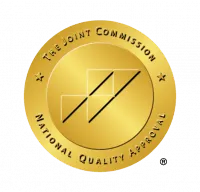How the Pandemic Changed Your Employees Alcohol Use
The COVID-19 pandemic has left a swath of destruction around the globe and has impacted your employees and the way they work. The fear, stress, and uncertainty left workers with few outlets for their anxiety and frustration. It didn’t help that restrictions, lockdowns, and the shift to remote work brought on the isolation that workers couldn’t cope with. For many, the escape was alcohol: unfortunately, as the pandemic lingered on, that escape turned into a difficult routine to break.
Remote work brought some purpose at home, but contained minimal interaction — often only through online calls and messages resulting in an increase in depression and stress levels. For parents struggling to juggle at-home work with at-home children locked out of schools, the balance may have been almost unsustainable. For mothers, the effects of remote work; school and daycare closures; and other lockdowns were felt particularly hard.
The occasional drink after work for many became a habitual drink after work; sometimes beginning before the workday ended. The unintended consequence of lockdowns and closures meant to shield our health may have created another health crisis: alcohol abuse. Alcohol use disorder (AUD) is becoming a significant problem in the country and in the workforce.
Increased alcohol use and abuse
In 2020 the Journal of the American Medical Association (JAMA) reported a national increase of 54% in sales of alcohol for a single week in March over the year before: compared with 1 year before, online alcohol sales increased 262%. Americans were turning to alcohol for comfort in record numbers.
The American Psychological Association cited a 2021 Harris poll that revealed that 23% of adults said they were drinking more alcohol to cope with their stress during the pandemic. For parents with children between 5 and 7, that number jumped to 52%.
The data suggests women were more impacted by the stress of the pandemic than men: a Rand study found that 41% of women reported increased drinking. Another study found the ‘psychological stress’ related to COVID-19 was associated with greater drinking for women than men. Women are already twice as likely to develop depression and anxiety: heavy alcohol abuse can worsen these conditions.
These issues can easily spill over into the workforce, creating problems for both employees and employers.
The fallout for employers
While it’s impossible to monitor and direct employee alcohol use, the risk for business resulting from employees’ casual or infrequent drinking is real. Employers may see the aftereffects of too much drinking off-hours, resulting in lower performance during a particularly rough hangover. Worse still, they may start drinking while on the clock, impacting productivity.
Businesses may see increased illness, absenteeism/presenteeism, diminished performance, or even risky behavior that threatens the employee or the organization. For supervisory staff, the fallout may spill down to direct reports who cannot provide the support and guidance the affected employees require.
How to help
Employee health benefits may be available for staff members who are experiencing alcohol use disorder (AUD). These resources may be a lifeline to get the assistance they need and get back on track personally and professionally.
The first step is awareness: staffers may not understand what help is available to them. Whether for a group health plan, or wellness benefit, communicate widely and often. For employees experiencing high levels of stress, anxiety, or who are seeing behavioral changes, resources are confidential, available, and should be leveraged if needed.
Remove the stigma of asking for or seeking help. Employee wellness is more than physical wellbeing. Mental health is just as important. When you discuss wellness and health overall, make sure to include both physical and mental wellbeing. Remind employees that using these services is confidential – just like other healthcare services they utilize. Remind staff their use is encouraged for any staff member who feels a need, whether it’s intermediate or long-term assistance.
Train your management team. Your management team should be able to recognize signs that employees are in distress. It may begin with noticeable indicators like increased absenteeism. Managers should look for slurred speech or sub-standard performance or productivity that is sudden or unexpected. Empower managers to remind employees that resources are available if they are in need. If the work is impacted, assure managers they have the tools and resources necessary, including help from management and HR, to address performance or potential AUD concerns with an eye to solutions.
Business leaders can help employees experiencing AUD get back on track in their personal and professional lives. It starts with awareness and a willingness to offer resources and support. It results in saving an employee who can become a loyal, long-term staffer.
Will insurance cover treatment? Verify Coverage
Have Questions? Call (800) 504-5360

